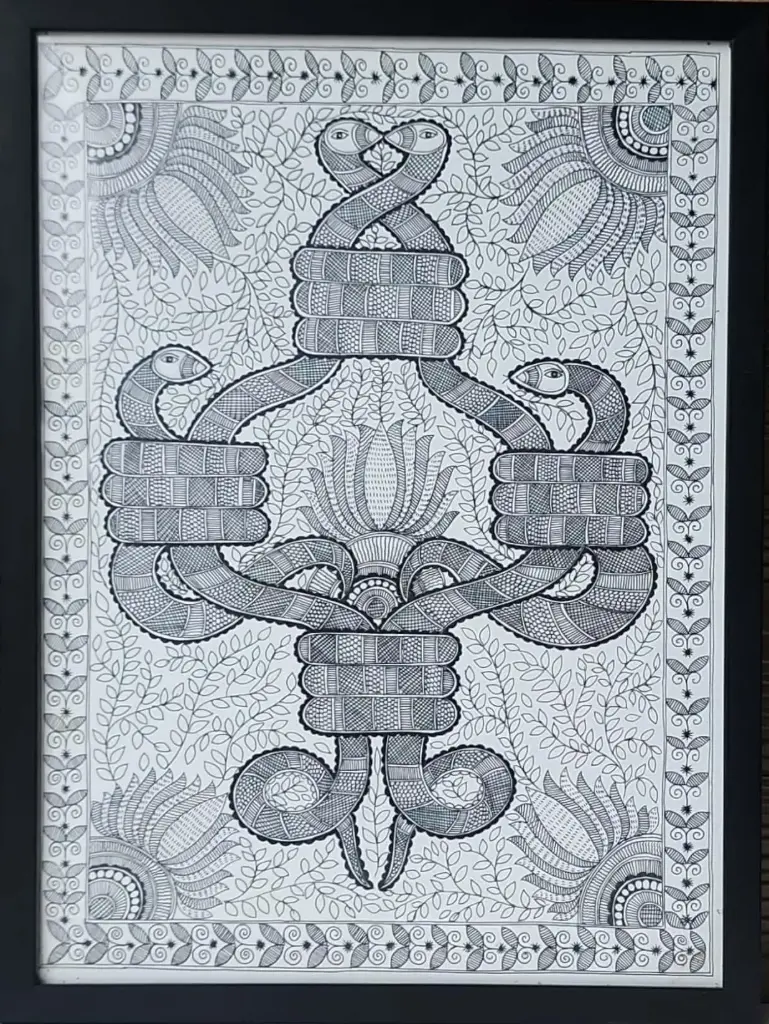The Entwined Serpents – Symbol of Cosmic Balance
This intricate black-and-white Madhubani painting showcases a mesmerizing composition of five entwined serpents, masterfully rendered in a symmetrical formation. The visual harmony of the artwork captures the mythological and symbolic depth often associated with serpents in Indian tradition.
Key Features and Symbolism:
Serpents (Nāgas):
Central to Hindu and Buddhist iconography, Nāgas (snakes) represent cosmic energy, fertility, protection, and rebirth.
The intertwined forms and mirrored coils suggest duality and unity, possibly echoing themes like Shiva-Shakti, male-female energies, or kundalini awakening.
Symmetry and Structure:
The composition exhibits perfect bilateral symmetry, enhancing the feeling of spiritual order and meditative repetition.
The three main vertical coils, bound at intervals, form a pillar-like structure—perhaps symbolic of Mount Meru or the central energy channel (Sushumna) in yogic philosophy.
Eyes and Facial Features:
Each serpent head is distinctly drawn with calm, poised expressions, emphasizing the watchful and divine nature of the Nāgas.
The central pair of snakes at the top appears to be gazing at each other, forming a subtle heart-like shape, reinforcing ideas of harmony and interconnectedness.
Floral and Foliate Background:
Surrounded by lotus flowers, tendrils, and concentric suns, the snakes are set within nature’s embrace, highlighting their sacred connection to life and regeneration.
The lotus, emerging behind the central coils, symbolizes purity born from the depths—a nod to transformation and spiritual evolution.
Border and Frame Design:
The painting’s dense border of spirals, vines, and florals is typical of Madhubani’s Kohbar style, often used in wedding and fertility themes.
The framing choice accentuates the contrast of bold form and delicate detailing.
This piece elegantly fuses the mysticism of serpent worship with folk intricacy, making it a standout artwork for themes such as Tantric symbolism, nature and divinity, or cosmic dualities in Indian art.
